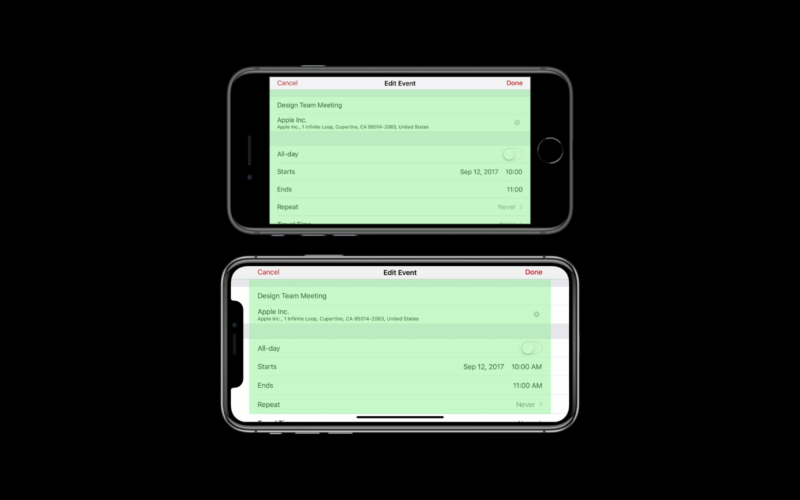
Today, Apple emailed iOS developers to explore new features in iOS 11 like ARKit. In that email, the company also announced that all new apps submitted from April 2018 onward must be built with the iOS 11 SDK and must support the iPhone X's new display.
This was Apple's complete message to developers on the subject:
iOS 11 has brought innovative features and the redesigned App Store to hundreds of millions of customers around the world. Your apps can deliver more intelligent, unified, and immersive experiences with Core ML, ARKit, new camera APIs, new SiriKit domains, Apple Music integration, drag and drop for iPad, and more.
Starting April 2018, all new iOS apps submitted to the App Store must be built with the iOS 11 SDK, included in Xcode 9 or later. All new apps for iPhone, including universal apps, must support the Super Retina display of the iPhone X.
The email didn't clarify exactly what support for the iPhone X's "Super Retina" screen means—does it just mean the resolution and aspect ratio must be supported, or do developers also have to update their apps to respect the rounded corners, sensor array (which many people call "the notch"), and the home indicator?
Apple has been sharing documentation, videos, and resources to explain to developers how to support the iPhone X for many months now, and that has included some very specific rules for dealing with the sensor array. So it might be the latter.
Back in November, Ars interviewed several iOS app and game developers about the process of updating their apps for the iPhone X. The general consensus was that Apple provided ample support, and as long as the apps were already generally compliant with Apple's recommended conventions, the transition was quick and mostly painless.
While you might expect that dealing with the notch is the real hassle for developers, we instead heard that the home indicator—that thin bar that's ever-present in the UI to let you know you can swipe up to go to the home screen or to multitask—is the real hassle. Certain games and other apps that use custom layouts could run into trouble with the rounded corners, too.
It makes sense to require devs to support the iPhone X for new apps—devs would be shooting themselves in the foot if they didn't do this anyway. Eventually, though, you can bet that Apple will require all app updates—changes to existing apps, not just wholly new apps—to support the iPhone X. That's going to cause more of a scramble in the development community.
reader comments
130